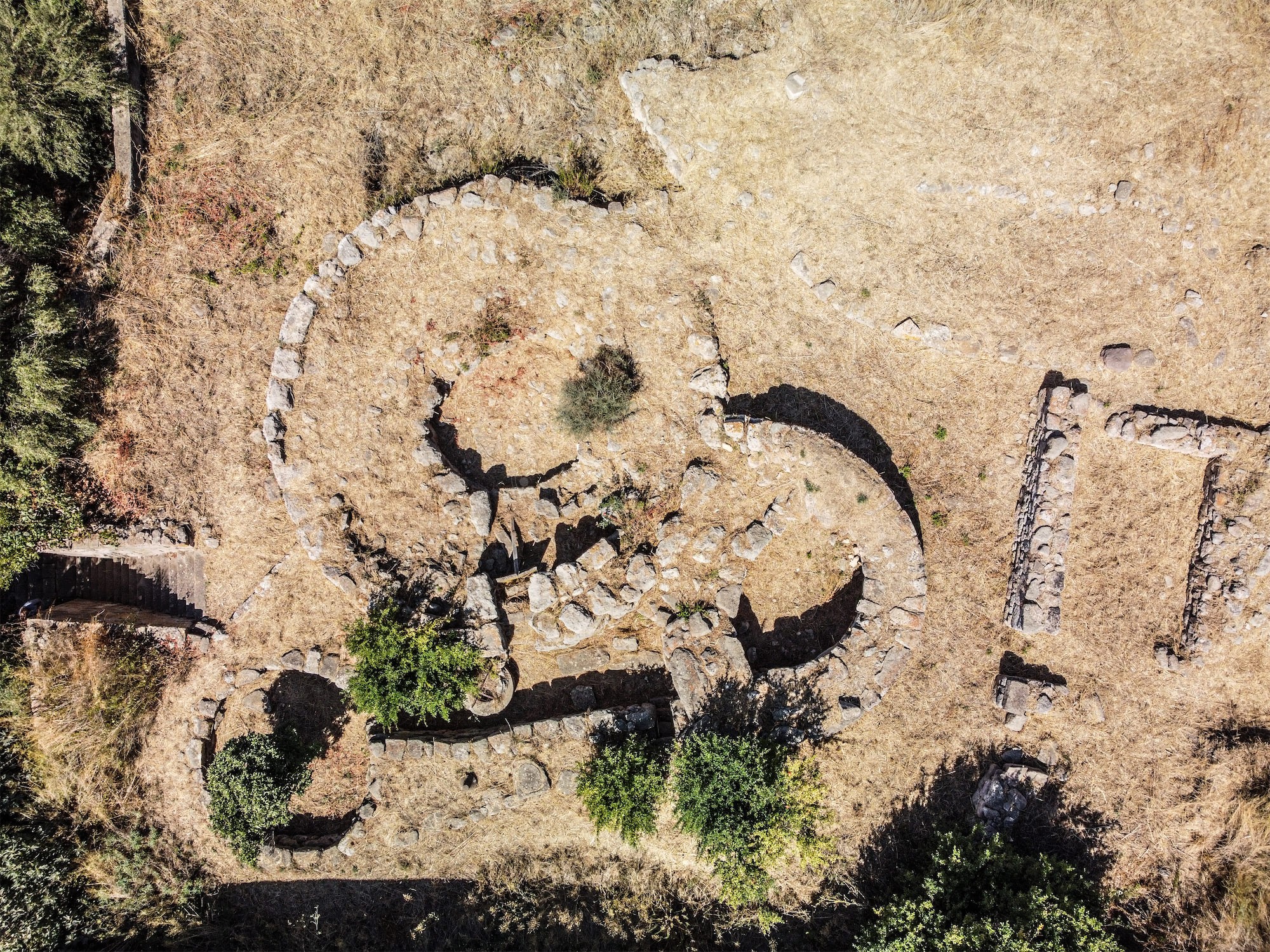
Uri
Nuragic Complex of Santa Cadrina
The Nuragic and Roman settlement complex of Santa Caterina is located in the urban area of Uri, over a little hill in the highest part of the town, about 160 metres above sea level (tn* the Nuragic age, Bronze Age, dates back to 1800-1500 BC). Facing north-east, it dominates the valley of the river Rio Carrabusu and the rest of the territory, including the body of water in the artificial resevoir of Lake Cuga. Part of the structures were uncovered in the early 60s, during stone clearing and reclaiming work in the area by the land owner, who wanted to plant a vineyard. Later, an archaeological dig was initiated by the same land owner, who uncovered almost all the structures visible today. The complex is made up of a nuraghe and its village (tn* nuraghe: large megalithic, tower-shaped, prehistoric stone structures found in Sardinia, dating from the second millennium BC to the Roman conquest). It is both unique and peculiar that the three nuragic towers, and the remains of huts surrounding them, are found in the historic centre of the village of Uri. This is indisputable proof that Uri, centre of the Union of the towns of Coros, and sub-region of Logudoro, has a four-thousand year-old history. A story that started with the settlement of Santa Cadrina (“Cadrina” is the name “Catherine” in Logudorese Sardinian), around which the urban network developed without interruption until modern times. It is an extraordinary example of residential longevity, documented by Pre-nuragic and Nuragic remains. There are also Roman and Medieval remains, including two wells, a mill, and lithic and ceramic finds, which link to various periods, in particular the Roman and Byzantine. The nuraghe of Santa Cadrina is embedded in the heart of Uri, on a little hill that overlooks the valley of the river Rio Carrabusu. Today it is surrounded by a terraced park of fruit trees, aromatic herbs and Mediterranean scrubland. It is a complex structure, consisting of a keep (central tower), of almost twelve metres diameter, and two secondary towers, of four and a half metres diameter, linked by walls that circumscribe a small courtyard. The nuraghe was built with large stones of limestone and trachyte, organised in regular rows, during the Middle Bronze Age (16th-17th century BC). The keep is made from smaller stones. It is accessible through an entrance followed by a short corridor, that leads to an inner courtyard. Here there is a well that is still used today. In the keep there are traces of a big oven, maybe used for heating and to forge metals and work terracotta. The chamber in one of the smaller towers, with ellipsoidal plan, has four niches and is connected to the courtyard by a two-metre long corridor. Around the nuraghe there was a village, also provided with a well. At the end of the 20th century the bases of many huts were uncovered here.
Source: record from Coracensis year 1996, by G. Biddau (in Italian)


